
Ground water treatment
Apart from being a requirement for regulatory compliance and environmental protection, the treatment of groundwater is very often an integral part of the remediation and regeneration of brownfield...
MORE >>
Ground water treatment
Apart from being a requirement for regulatory compliance and environmental protection, the treatment of groundwater is very often an integral part of the remediation and regeneration of brownfield land. Cognition Land and Water has many years of experience and innovation in this area and we have developed our in-house capability, resources and expertise to include a wide range of techniques and technologies for the treatment and discharge or disposal of groundwater, surface water and tank contents. These include:
- pump and treat
- insitu treatment
- extraction, treatment and disposal
- chemical oxidation
- air sparging
- vapour extraction
- novel PFAS treatment technology
- unique FabEx product removal system
- suspended solids control

Permeable Reactive Barriers
A Permeable Reactive Barrier (PRB) is a treatment zone of reactive material that is built below ground to clean up polluted groundwater. The reactive zone may be installed as a below-ground wall...
MORE >>
Permeable Reactive Barriers
A Permeable Reactive Barrier (PRB) is a treatment zone of reactive material that is built below ground to clean up polluted groundwater. The reactive zone may be installed as a below-ground wall to intercept a migrating plume of contaminated groundwater. Alternatively, the contamination can be funnelled by low permeability barriers (e.g., slurry walls) to a gate or vessel containing the reactive media - the funnel and gate method. The reactive media is selected to absorb or adsorb the pollutants from the groundwater or to convert harmful chemicals to harmless by-products.
Cleaning groundwater with a PRB may take many years as the time taken depends on the amount of pollution present in the groundwater and how fast the groundwater moves through the PRB. Despite this, there are several advantages of using a PRB to remediate contaminated groundwater:
- The installation is beneath ground preventing human contact with the contamination
- Low operating and maintenance costs
- No energy requirement as the system relies on natural groundwater flows
- No pumps, moving parts or associated noise
- Invisible after installation
- Allows continued use of the site after installation
Cognition Land and Water has successfully installed PRBs at more than 100 sites.

PFAS Treatment
PFAS (Perfluorinated alkylated substances) are a group of man-made substances used in many industrial and consumer products such as carpeting, clothing, fire-fighting foams, cooking pans,...
MORE >>
PFAS Treatment
PFAS (Perfluorinated alkylated substances) are a group of man-made substances used in many industrial and consumer products such as carpeting, clothing, fire-fighting foams, cooking pans, coatings, etc. because of their resistant to water, oil and heat. These chemicals are highly persistent, very mobile in soil and groundwater, and resist degradation in the environment. They bioaccumulate and PFOA - one of the primary compounds within the PFAS group - is believed to be in the blood of virtually every living creature on the planet… including 99% of humans. These ‘forever chemicals’ have been linked to adverse health effects such as low birth weight, delayed puberty onset, elevated cholesterol levels and reduced immunologic responses to vaccination. At Cognition Land and Water, we have been closely monitoring the progress of knowledge around these new and emerging chemicals and have been actively involved in the design and implementation of remediation strategies for a number of key sites including former airfields and fire fighting facilities. We are also partnering with the Australian developer of a novel and innovative water treatment process that removes all detectable traces of PFAS from treated water at high throughput rates, at low cost and without the need for costly and limited capacity reagents, catalysts or filters. In our aim to be at the forefront of our industry, Cognition is actively funding the production of CIRIA best practice guidance on the assessment and remediation of PFAS impacts as well as being a member of the Project Steering Group.

Asbestos in Soils
Asbestos in soils has been a contentious and problematic issue on development sites throughout the UK for many years. Without correct management of the demolition of previous buildings or the...
MORE >>
Asbestos in Soils
Asbestos in soils has been a contentious and problematic issue on development sites throughout the UK for many years. Without correct management of the demolition of previous buildings or the placement of fill or made ground that contains asbestos fragments, cleaning up the problem can be costly, time consuming and fraught with risk. But this doesn’t have to be the case…
At Cognition Land and Water, we have a longstanding track record of managing and remediating issues associated with asbestos in soils. Careful materials management, selective screening, hand picking, processing and treatment of soils can remove the bulk of the asbestos. Once this much smaller volume of highly concentrated asbestos has been removed from site and disposed at a suitably licensed facility, the residual soils can be reused within the works. If placed in a distinct and recorded location, beneath a clean cover system, there is no risk to future site users or the local environment and the development can progress without undue cost, programme of regulatory compliance issues.

Bioremediation
From bench and field trials in the challenging conditions and climate of Kuwait to scores of successful bioremediation projects in the UK, Cognition Land and Water has an enviable track record in...
MORE >>
Bioremediation
From bench and field trials in the challenging conditions and climate of Kuwait to scores of successful bioremediation projects in the UK, Cognition Land and Water has an enviable track record in the successful and cost-effective remediation of hydrocarbon impacted sites using bioremediation technologies. We have funded and undertaken academic research and trials to ensure that the additives we use and the temperature and moisture condition we maintain in our works result in the most aggressive conditions for the breakdown of hydrocarbons in the least time possible.
On our projects, we regularly treat excavated and processed hydrocarbon-impacted soils ex-situ using bio additives. The soils are treated using a number of additives including HCR, Bio SRO2, PGA, Bio nutrient, cultured indigenous bacteria and Skyhawk Hydroeater. Cultivated indigenous bacteria and ligninolytic fungi may also be used to supplement treatment processes and Oxygen Release Compound (ORC) Granules may be used for extended aerobic bioremediation of the hydrocarbons.
Where it is uneconomical or not possible to remove material for bioremediation, we have also carried out in-situ bioremediation. These methods are implemented through boreholes, forming trenches or in-situ bio piles and can prove very effective in the right circumstances.

Invasive Species
The main invasive species found on marginal land include Japanese Knotweed, Giant Hogweed, Himalayan Balsam and Rhododendron Ponticum. They are all highly regulated and...
MORE >>
Invasive Species
The main invasive species found on marginal land include Japanese Knotweed, Giant Hogweed, Himalayan Balsam and Rhododendron Ponticum. They are all highly regulated and allowing them to spread off your land can be a criminal offence. Although there is no obligation to remove from land you own, these species spread quickly, out-compete native plants, and can cause serious damage to structures, pavements and drainage infrastructure.
Working with specialist ecologists in the identification and survey of invasive species, Cognition Land and Water generally uses one or a number of the following methods to eradicate invasive species on our projects:
- Herbicide treatment
- Excavation and on-site treatment and burial
- Off-site disposal
- In-ground barriers to avoid reinfection from adjacent land.

Encapsulation & Stabilisation
Soil Stabilisation involves the introduction of specially formulated cementitious or liquid solutions directly into or onto the ground through the use of purpose built injection augers or dosing...
MORE >>
Encapsulation & Stabilisation
Soil Stabilisation involves the introduction of specially formulated cementitious or liquid solutions directly into or onto the ground through the use of purpose built injection augers or dosing at the surface followed by rotavation and compaction. The system is designed to achieve reduced permeability and/or increased strength within the soil mass to improve the physical properties of soils. However, it also has the added benefit of ‘locking in’ leachable contaminants, thereby providing a very effective remediation solution.
This technique is a cost effective alternative to importing aggregates for both temporary and permanent works. Cognition Land and Water was one of the first ground engineering contractors to introduce to the UK the notion of cement stabilisation of site arisings to create pile mats in the early 2000s. We now use this approach on over 90% of our sites resulting in a far more sustainable, cost-effective and quicker working platform than the disposal of site arisings and the import of aggregates.
In-ground soil stabilisation can be used to form highly efficient cut off walls within or around contaminated sites without needing to dispose of large volumes of contaminated spoil. Cognition has used this technique on many sites to great effect.

Validation and Verification
Scrupulous record-keeping and collating site verification/ validation/ completion report data from the start of the project (rather than upon completion as is oftentimes done by others) is a...
MORE >>
Validation and Verification
Scrupulous record-keeping and collating site verification/ validation/ completion report data from the start of the project (rather than upon completion as is oftentimes done by others) is a distinct approach taken by Cognition Land and Water. We have learnt through experience that the alternative approach (collating the required information at the completion of the project) is stressful, fraught with difficulties, and less likely to achieve a high quality Verification Report required for discharge of planning conditions, surrender of an environmental permit, confirmation of the completion of the works, and settlement of final payments.
This is why we have put in place comprehensive systems and procedures to ensure we maintain accurate and up-to-date records of site works from project commencement and collate those records in one location in our project folders from the outset to make the compiling of the final verification/ validation/ completion report a straightforward and painless process.

Site Investigation
Cognition Land and Water is not a site investigation contractor and we do not regularly carry out site investigations as a single service on a project. However, through the vast experience...
MORE >>
Site Investigation
Cognition Land and Water is not a site investigation contractor and we do not regularly carry out site investigations as a single service on a project. However, through the vast experience and track record of our professional team, including several who have worked within ground investigation contractors and consultants for many years, we are adept at planning, specifying and managing site investigations for projects where we have been commissioned to carry out our ground engineering and/or remediation contracting services. This may include additional desk study research, supplementary ground investigation following gap analysis, ground investigation to finalise detailed design, additional investigation to refine our approach or solution to a project, installation of additional gas/ groundwater monitoring wells, or investigations into unforeseen ground conditions during a project.
Our in-house staff and plant resources makes the execution of ground investigations cost effective and rapid for our clients. Strong relationships with our network of specialist ground investigation contractors means that we can bring in these specialist services on larger investigations using a wide variety of techniques and technologies.

Fabex-free product removal
Cognition Land and Water offers an innovative solution for the remediation of free phase oil contamination of groundwater. Having already achieved great success in dealing with contaminated sites...
MORE >>
Fabex-free product removal
Cognition Land and Water offers an innovative solution for the remediation of free phase oil contamination of groundwater. Having already achieved great success in dealing with contaminated sites across much the USA, Cognition is unique in offering the system to the UK market.
Traditional remedial techniques, such as pump and treat, are often costly and inefficient in recovering free product. Based on extensive experience addressing petroleum and chemical spills, we can deploy the FabEx system to recover both light and dense non aqueous phase contaminants (LNAPL and DNAPL), also known as free-phase product.
The simple but highly effective NAPL Fabric Extraction Technique - FabEx - utilises an oleophilic/ hydrophobic fabric capable of adsorbing the product with a 99% recovery efficiency. The fabric is conveyed in a continuous loop into the well to intercept the oil-water interface. As the fabric travels through the interface, product is adsorbed. The adsorbed product is then removed in a specially designed desorption unit and the recovered oil collected in a storage drum or tank for disposal or recycling.
There are many advantages of the system over conventional groundwater treatment or product removal systems but the key benefits include:
- Small footprint is perfect for operational or space restricted sites
- Eliminates the need to extract/ treat/ process large volumes of groundwater
- Minimises or eliminates disposal costs
- No requirements for groundwater permits
- Recovery is not influenced by fluctuating water table
- Light/dense Non Aqueous Phase Liquids (NAPL) recovery at highly impressive speeds
- System can be deployed in wells of varying diameters (as small as 50mm) and in boreholes at depths of up to 60m
- Recovery efficiency with 99% product-water ratio
- Reduces O & M costs by nearly 70%
- Optional remote operation
- Low power usage and can be combined with solar and wind power units

Material Management
At Cognition Land and Water, the key driver in establishing a pragmatic and cost-effective remediation strategy for a brownfield site is most often the minimisation of off-site disposal and onsite...
MORE >>
Material Management
At Cognition Land and Water, the key driver in establishing a pragmatic and cost-effective remediation strategy for a brownfield site is most often the minimisation of off-site disposal and onsite reuse of site won soils. As an example on our Royal Wharf development in East London, we achieved 99.5% soil reuse on the project with large sustainability, environmental, cost and programme benefits. High quality materials management and effective processing, treatment and remediation of impacted soils is fundamental in achieving this enviable outcome.
Coypool Park, Plymouth
Soft strip, asbestos removal, demolition, slab breakout, contamination hot spot removal, ground validation, bioremediation, NORM removal, TPO and protected species management
The site formerly known as Imerys China Clay, Marsh Mills, at Coypool, Plymouth is to be redeveloped to accommodate 560 new homes, a social centre, kindergarten and a school. For more than a century, the 70 acre site has been used for the...
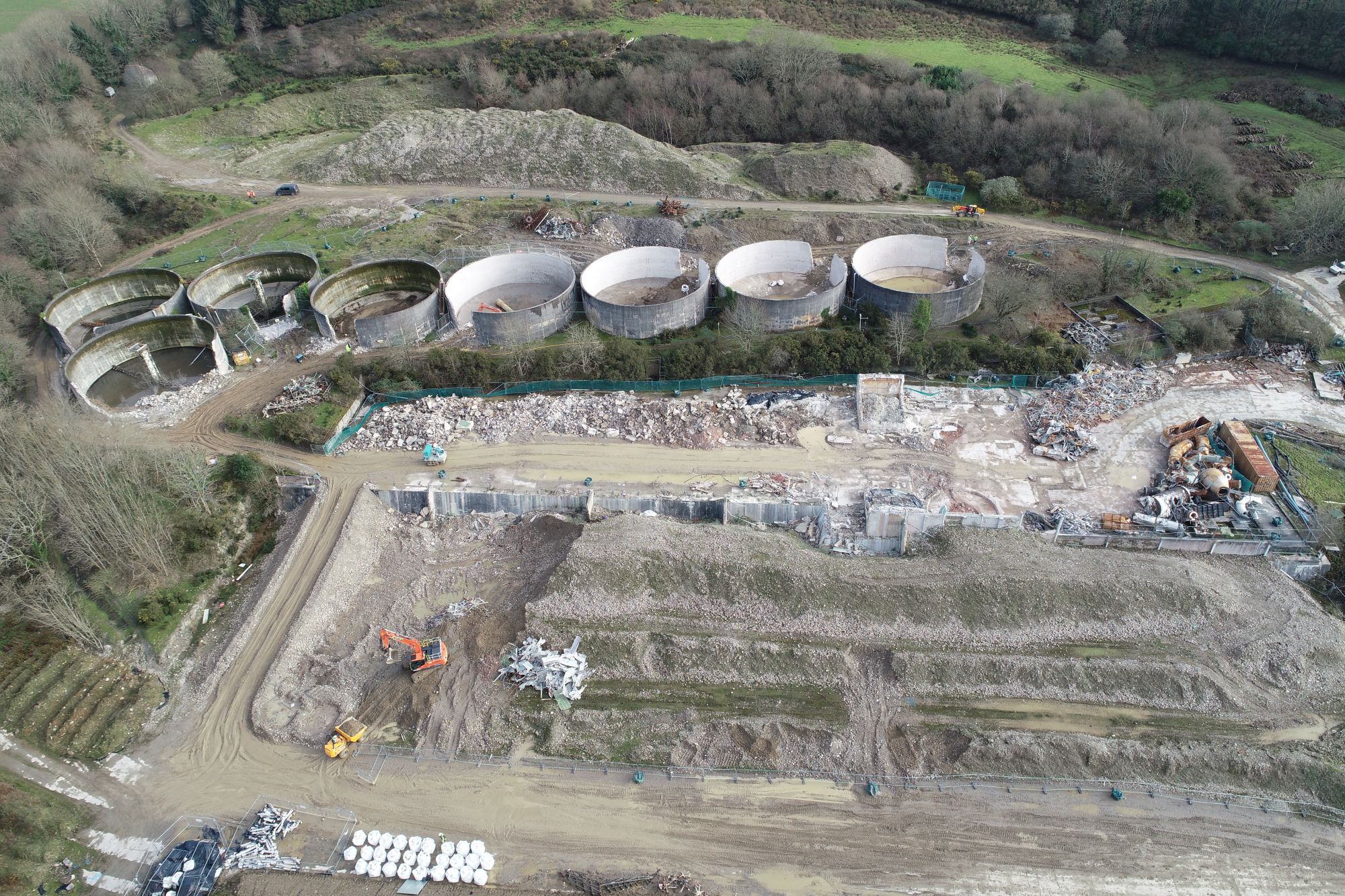
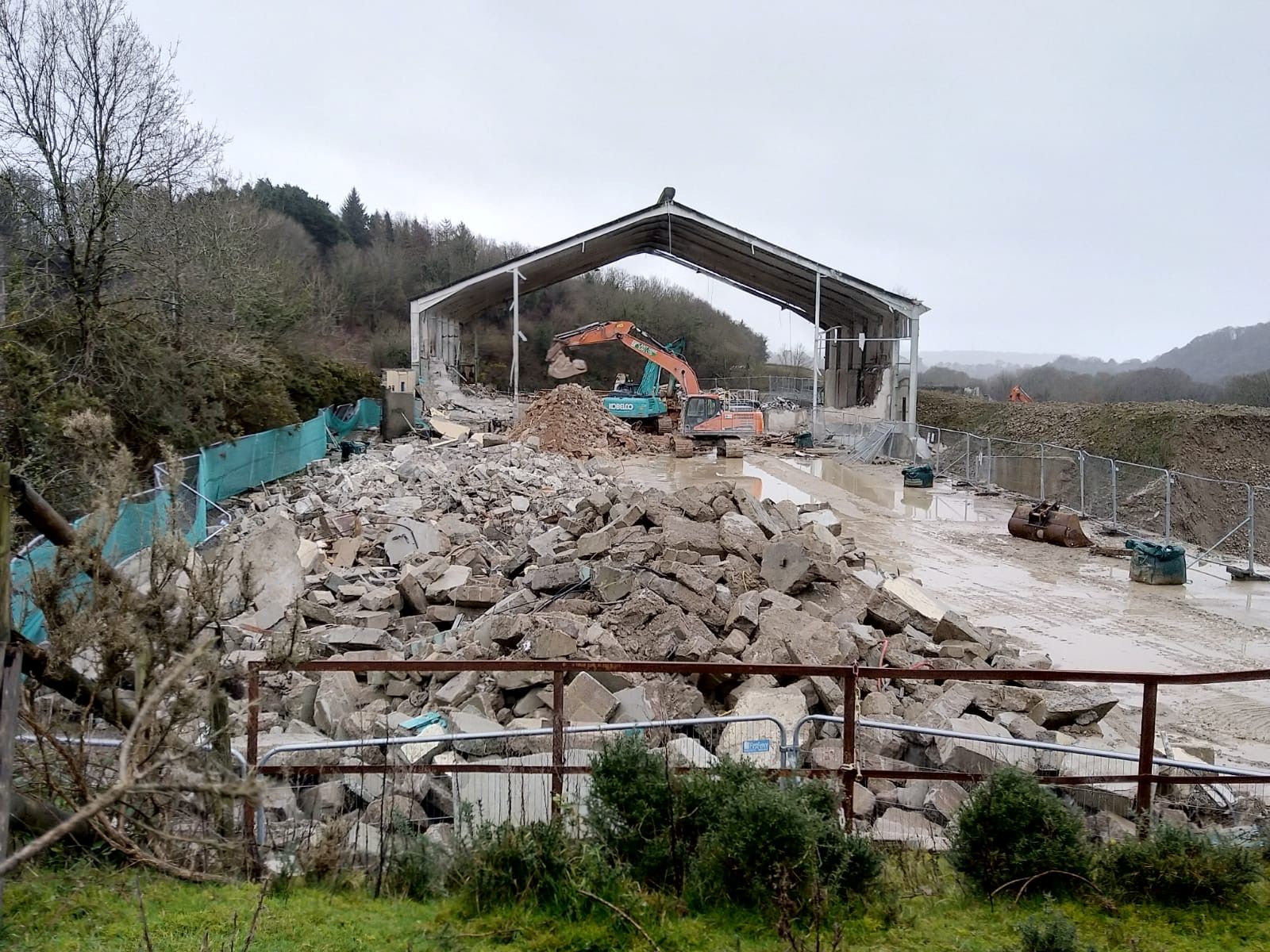

 Read More
Read More
Former Pirbright Institute, Compton
Enabling works, Demolition, Remediation, Earthworks
In May 2023, Cognition Land and Water began works at The Former Pirbright Institute in Compton, Berkshire. The site was a scientific animal research facility comprising laboratories, offices, storage sheds, animal welfare buildings, grazing...
.png)
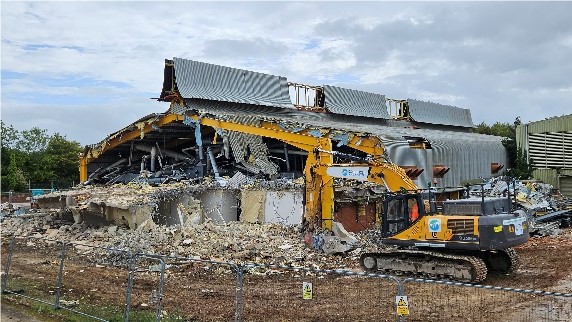
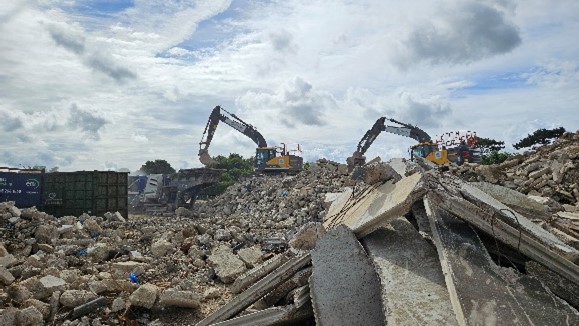
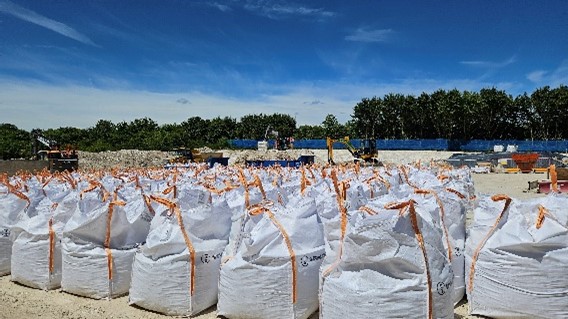 Read More
Read More
Sayers Common
Earthworks, Soil Remediation, Processing and Stabilisation, Dynamic Compaction, Asbestos Picking
Cognition Land and Water Limited was commissioned by Elivia Homes to undertake remediation and ground improvement at a disused former brick field land at Furze Field, Reeds Lane, Sayers Common. A residential development is proposed at the...



 Read More
Read More
Plumstead West Thamesmead
Site clearance, Demolition and breakout slabs and foundations, Excavation to formation including remediation of contaminated soil and groundwater(NAPL), Asbestos removal, UXO clearance, Bio-remediation, Soil stabilisation, Piling platform construction, Piling attendance, and Basement excavation.
This 6.1 hectare site is located at the east side of the Royal Borough of Greenwich on the eastern extremities of Woolwich Town Centre in Plumstead. The proposed development masterplan is for the creation of residential led development, called...



 Read More
Read More
Bow Common Gasworks
Services & UXO clearance, Dewatering, Groundwater treatment & discharge, Obstruction, tank and foundation removal, Gasholder base decommissioning, Contamination hotspot remediation, Cement stabilisation, Soil reuse under DoWCoP, Aggregate production under Quality Protocol, Permanent SuDS and drainage installation, Pile mat construction, Piling attendance
Cognition Land and Water was commissioned by St William Homes to undertake contamination remediation, ground obstruction removal, materials management, earthworks, pile mat construction and associated groundworks to support the proposed...



 Read More
Read More
Silvertown Tunnel
Demolition, enabling works, pre excavations, service installations, highway works, remediation, materials management and processing, complex and major civils, coach park construction
The Silvertown Tunnel scheme (STT), when completed, will link North East and South West London from the North Greenwich area to the Royal Victoria Doc area (Silvertown) and will serve to reduce the current congestion at the Blackwall Tunnel.


 Read More
Read More
Barking Power Station Cooling Waters Tunnels Decommissioning
Demolition, Drilling and Grouting works on land and within River Thames in a highly regulated Marine Environment with associated permitting and licencing requirements. Temporary works and enabling works including dewatering of the tunnels and monitoring of existing River wall.
The site was located at the disused Barking Power Station where City of London Corporation was assembling land for the relocation and amalgamations of the three London Markets. The scope of works comprised the decommissioning of two...



 Read More
Read More
Barking Power Station Pipeline Decommissioning
Access and licensing agreements with Landowners, decommissioning of redundant pipeline including grouting up using Low Carbon VE alternative.
The works involved the decommissioning of the Barking Power Limited (BPL) 610mm (24’’) nominal diameter natural gas pipeline running from BPL’s Above Ground Installation (AGI) at Hordon in the east and to the AGI within the...



 Read More
Read More
Burgess Hill, Sewage Treatment, Landfill
Demolition, landfill remediation, bioremediation, water treatment, earthworks, soil stabilisation, ecological management.
The former sewage treatment works was demolished and, together with a former landfill on the site, remediated to make way for 325 residential dwellings, a community hall and new roads and infrastructure. Since closure in 2005, the...



 Read More
Read More
Bethnal Green, Marian Place
Contamination remediation, gasholder decommissioning, obstruction removal, earthworks, materials management, drainage installation, canal wall construction
Cognition Land & Water Limited was contracted by St William Homes (Berkeley Group) to undertake gasholder remediation and enabling works at Marian Place, Bethnal Green, London. Marian Place Gasholder site is a...



 Read More
Read More
Bushey Water Treatment Works
Earthworks, demolition, segregation, groundwater treatment, chemical oxidation, backfill and compaction, stabilisation, Japanese knotweed treatment.
The former Veolia Water Central Ltd offices and water treatment works at Three Valleys Way was to be redeveloped for housing. The site covers an area of approximately 4.2 hectares and required excavation, remediation and soil improvement...



 Read More
Read More
Camden, Asham Plaiting Works
Earthworks, site investigations, segregation, chemical testing, reinstatement landscaping and groundworks.
The former Ascham Street works were originally identified by The London Borough of Camden under its duty under Part 2A of the Environmental Protection Act 1990 for investigation as potentially contaminated land...



 Read More
Read More
Cannon Wharf, Surrey Quays
Groundwater treatment, bioremediation, stabilisation, chemical oxidation, groundworks.
The former industrial site was remediated so that it could be further developed for mixed commercial and residential development. Cannon Wharf had a long history of industrial development since 1834, leaving the site contaminated with heavy tar...


 Read More
Read More
Canterbury, Rhodaus Town
Groundwater treatment, demolition, tank and contamination hot spot removal, bioremediation, chemical oxidation, earthworks, stabilisation.
The 1.2 hectare site in Rhodaus Town, Canterbury, comprised a former car dealership with showroom and workshops and a decommissioned Total petrol filling station (PFS). The site was known to have supported various garages, alongside a previous...



 Read More
Read More
Castle Mill, Oxford
In-situ stabilisation, excavation, geotechnical testing.
The 1.5 hectare site was previously occupied by railway sidings and was redeveloped with the construction of eight student accommodation blocks each between six and eight storeys. The buildings were to be constructed using piled foundation but...



 Read More
Read More
Cranleigh, Swallow Tiles
Demolition, asbestos screening, contamination hot spot removal, earthworks, stabilisation.
Cognition carried out extensive remediation works at a former brickworks to treat and process soil contaminated with asbestos. The 24.2 hectare site, located on the outskirts of the town of Cranleigh, Surrey, comprised woodland to the south and...



 Read More
Read More
Crowmarsh Gifford, Lister Wilder
Demolition, bioremediation, soil processing and production, stabilisation, Japanese knotweed treatment and disposal, archeological support.
Cognition remediated an agricultural machinery yard in Crowmarsh, Oxfordshire which is to be redeveloped for residential housing. Large areas of the yard was built over foundry sand and clinker deposited on the site to raise the land and...



 Read More
Read More
Greenwich, Enderby Wharf
Demolition and tank removal, Contamination hotspot removal, bioremediation, water treatment, earthworks, soil stabilisation.
Barratt Homes redeveloped the site with the construction of eight apartment blocks. Originally four of the blocks were to be located over a large basement to be used for car parking constructed within a secant pile wall. The north west area of...



 Read More
Read More
Godalming, Key Site
Site investigations, demolition, dewatering and groundwater treatment including NAPL removal, bioremediation, stabilisation, chemical oxidation.
The former gasworks was remediated and excavated in order to make way for a new residential development. The site was formerly occupied by a gas works between 1871 and 1970, which resulted in the contamination of the site soils and groundwater....
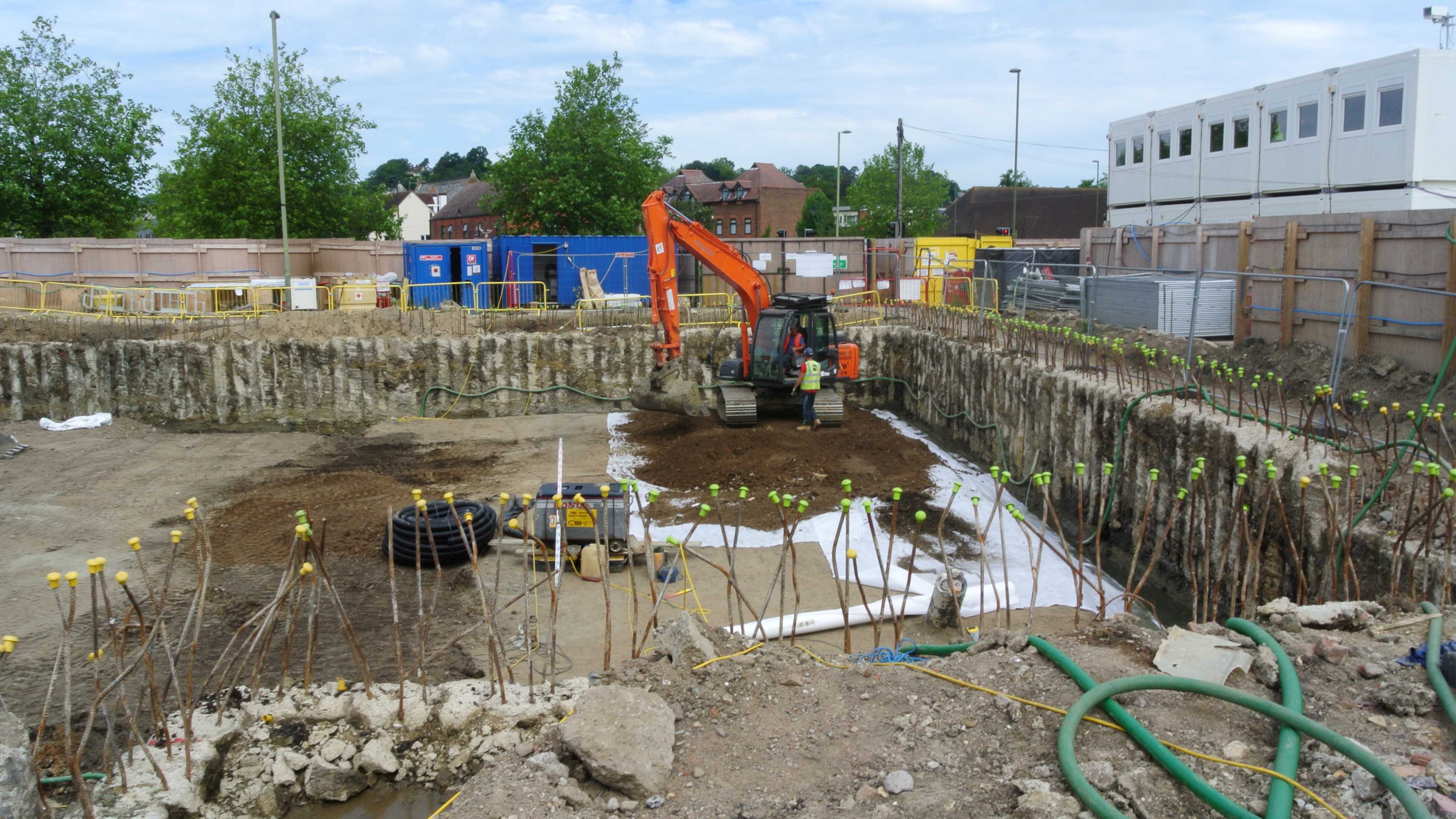
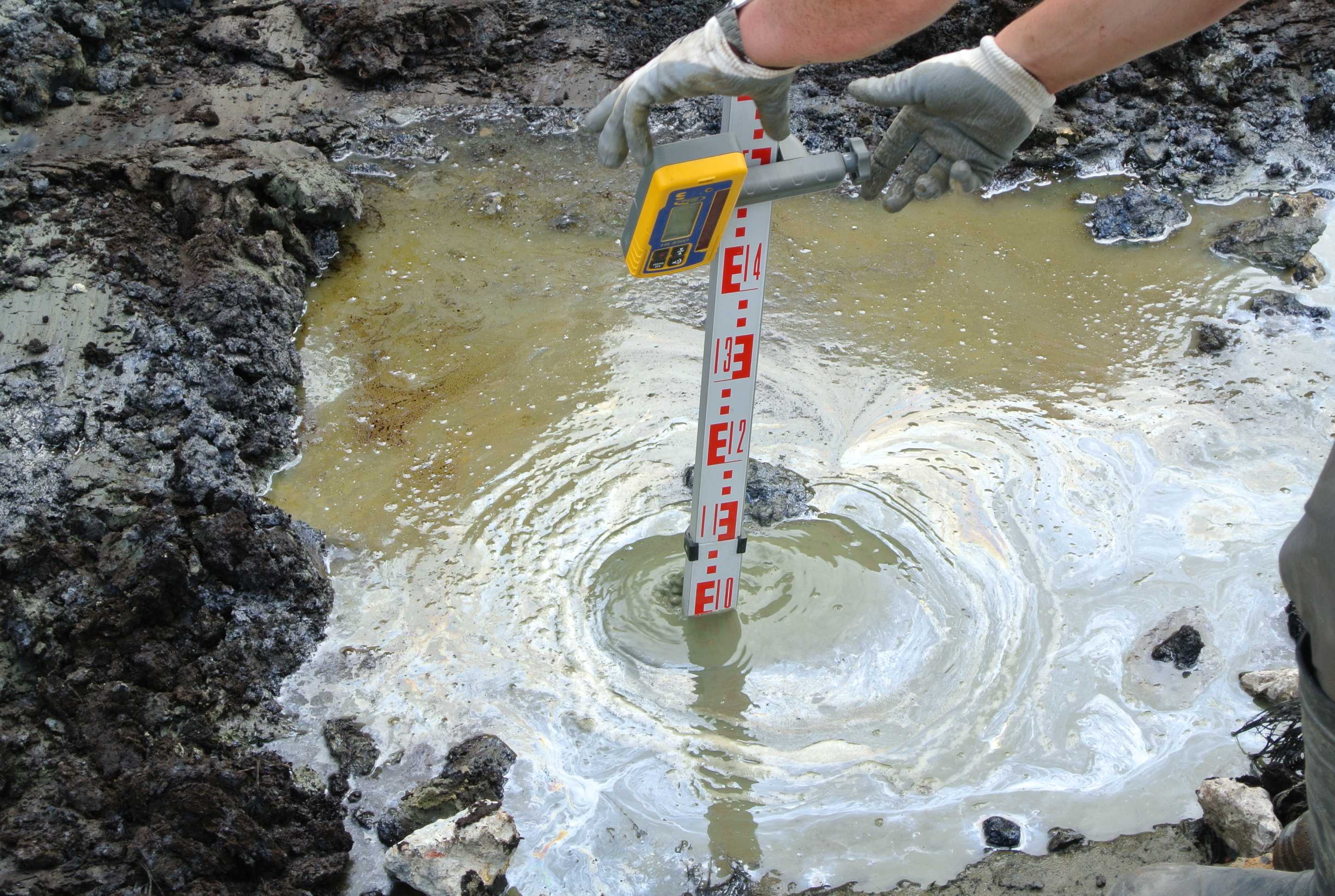
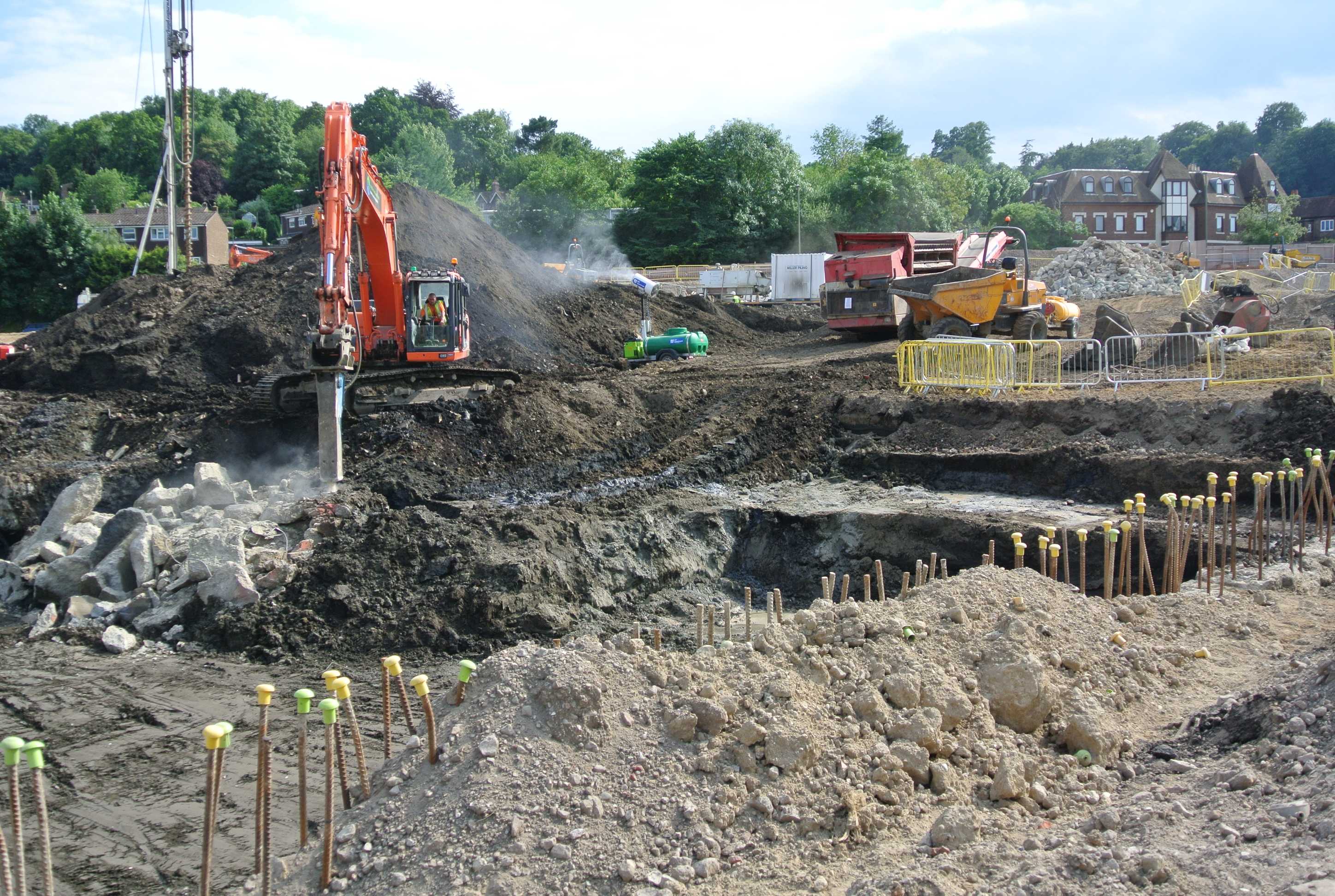 Read More
Read More
Goodluck Hope, Leamouth
Demolition, site Investigation, bioremediation, materials management and basement excavation, groundwater treatment including NAPL removal, stabilisation.
Dealing with a very large mixed residential and commercial use building development in the UK, Cognition had to ensure their remediation strategy was both cost-effective and sustainable. Cognition’s site Investigations identified...



 Read More
Read More
Great Blakenham
Chemical oxidation, groundwater treatment.
Cognition was contracted by a housing developer to propose a remediation strategy for the contaminated groundwater at a former cement works and petroleum supply depot in Great Blakenham, Suffolk. The site was operational between the...



 Read More
Read More
Great Shelford, Welch's Yard
Demolition and underground tank removal, asbestos removal, bioremediation, water treatment, earthworks, soil stabilisation.
Croudace Homes contracted Cognition to carry out remediation works on three sites in close proximity to each other in Great Shelford, the sites originally occupied by a petrol station, car parking and a transport/haulage company. The sites were...



 Read More
Read More
Harwell, LETP
Demolition, segregation and excavation, sludge processing, radioactive assay, dust suppression, environmental monitoring
The Liquid Effluent Treatment Plant (LETP) served 14 nuclear reactors from the main Harwell site. All reactors are no longer in service with all but three successfully decommissioned. The site is contaminated with a mix of low and very low...



 Read More
Read More
Hawkenbury Farm, Kent
Excavation and processing of landfill waste, hotspot removal, bioremediation, stabilisation, dynamic compaction, groundwater treatment, clay cut-off wall and permeable reactive barrier installation.
A former landfill dating from the 1930s-1960s covered the northern third of the site, occupying former clay pits mined in the early 20th century. The made ground within the landfill contained extraneous waste items such as ceramic, glass,...



 Read More
Read More
Hinkley Point 'A' Power Station
Bioremediation, stabilisation, NAPL removal, groundwater treatment, chemical oxidation, demolition, groundworks, radiological monitoring.
The Hinkley Point ‘A’ Site was decommissioned by Magnox. Diesel contamination was discovered in soil and groundwater during site investigations in an area known as an Area of Potential Concern, APC-9. The pollution was thought to...
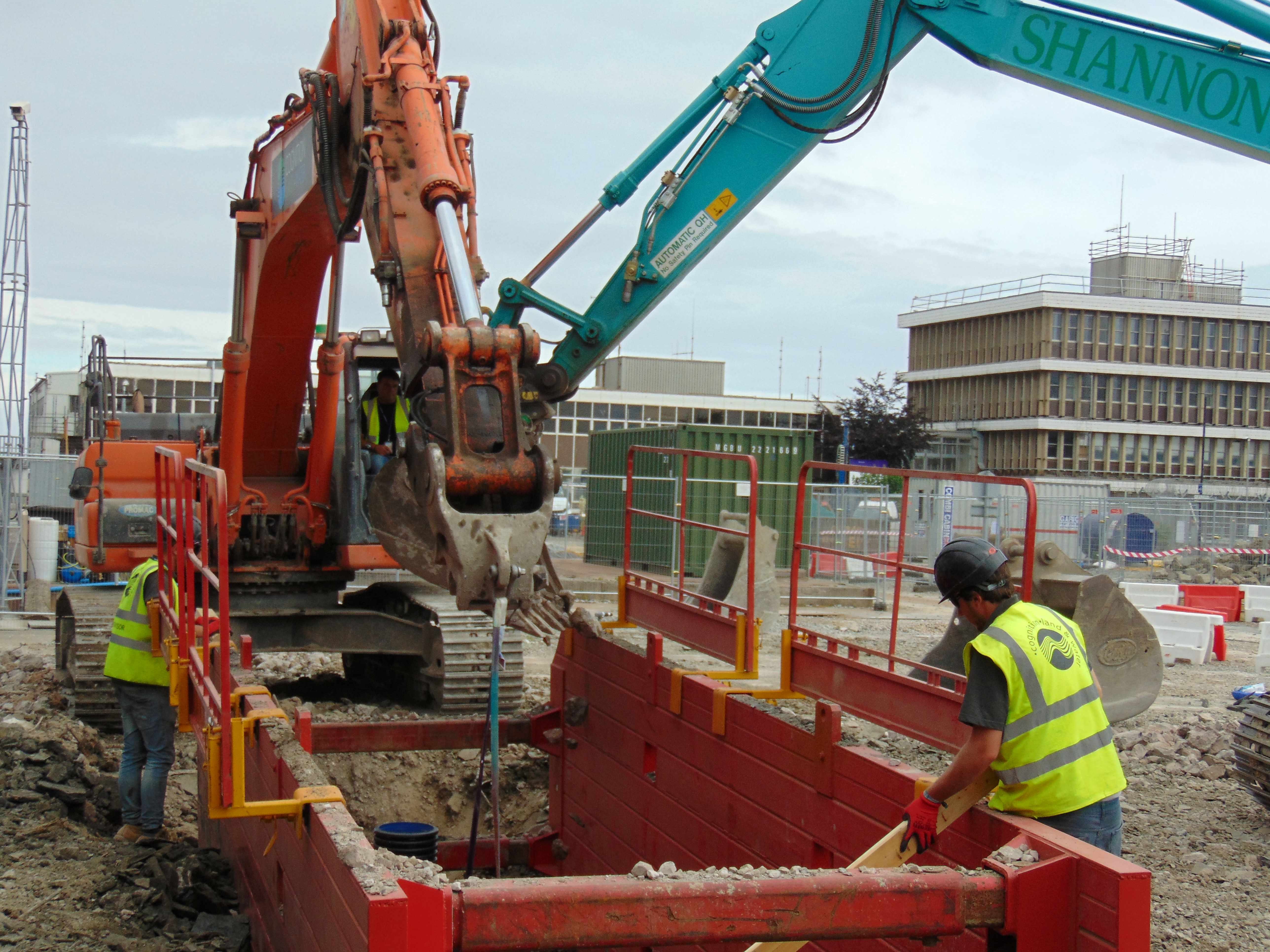
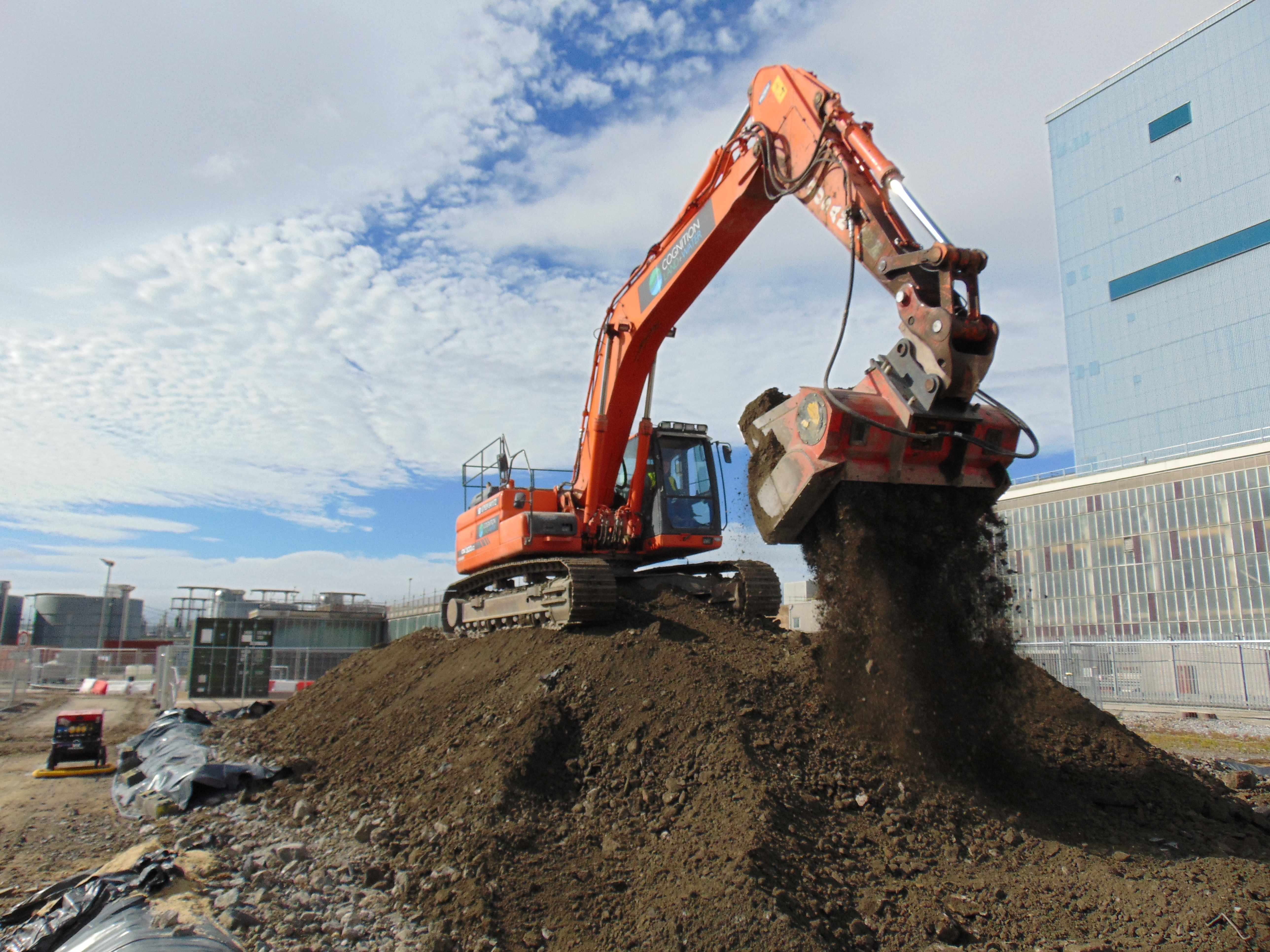
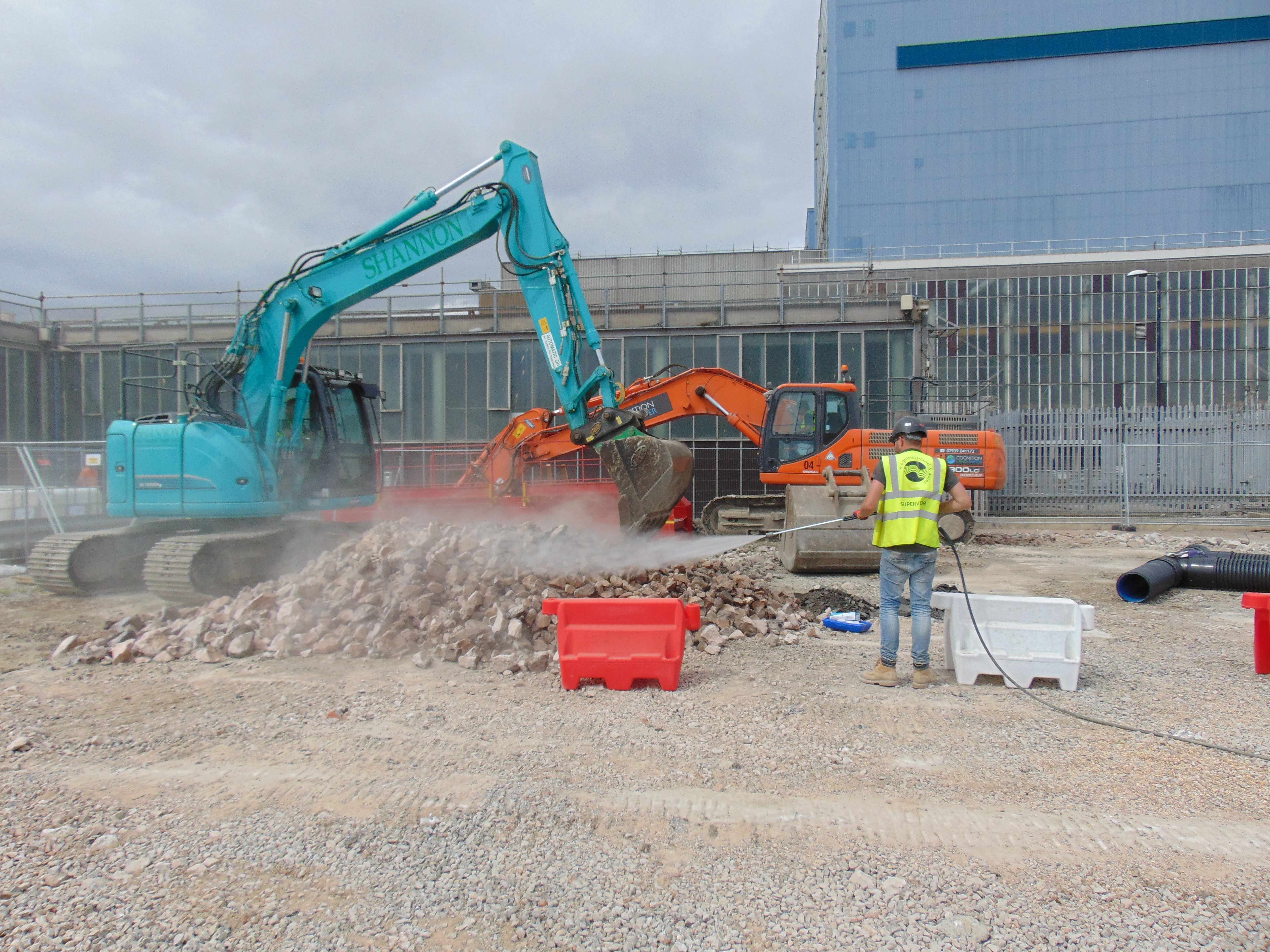
 Read More
Read More
Horley, Sewage Works
Demolition, bioremediation, stabilisation/encapsulation, ecological management.
Cognition was contracted by Wates to remediate a former industrial site in Whitmore Way Horley for a residential development. The site was occupied by the sewage treatment works and garages. Landfilling of pulverised waste had also taken place...



 Read More
Read More
Hunterston 'A' Nuclear Power
Cut-off/barrier wall, nuclear waste segregation, stabilisation/encapsulation.
An historic leaking active effluent drain on the site resulted in a sub-surface plume of radiological contamination. Also running through the area was a network of land drains that essentially acted as a pathway for mobilising Caesium137...



 Read More
Read More
Kingston Gas Works
Bioremediation, segregation, groundwater treatment, chemical oxidation, stabilisation, demolition.
The former gasworks was remediated to prepare the site for residential redevelopment. Three large gas holders, together with associated infrastructure and small buildings, were present on site at the outset of the works. A number of...
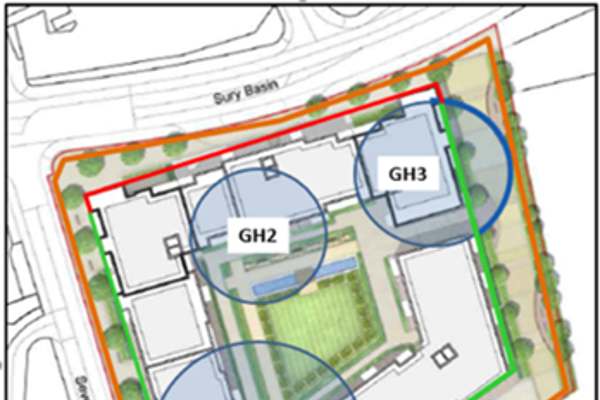


 Read More
Read More
Kent, Former Landfill
Excavation and processing of landfill waste, hotspot removal, bioremediation, stabilisation, dynamic compaction, groundwater treatment, clay cut-off wall and permeable reactive barrier installation.
A former landfill dating from the 1930s-1960s covered the northern third of the site. Landfill contained extraneous waste items such as ceramic, glass, brick, wood, metal and fabric. The soil was also contaminated with hydrocarbons which were...



 Read More
Read More
Meridian Water, Wiloughby Lane
Fabric extraction, of LNAPL and DNAPL, bioremediation, stabilisation, earthworks, groundwater treatment, site investigation, vacuum excavation.
The 8 hectare former gasworks site at Willoughby Lane had been operational for over 100 years resulting in several distinct sources of contamination, notably; arsenic, cyanide, hydrocarbons, VOC’s and PAH’s in the soils and Dense...



 Read More
Read More
Mill Hill, London
Demolition, waste segregation and treatment, bioremediation, stabIlisation, groundwater treatment, asbestos removal, groundworks.
The site was formally occupied by the National Institute of Medical Research and previously by laboratories and research buildings dating back to the 1920s. A number of chemical stores, plant rooms and waste pits have been identified from plans...



 Read More
Read More
Newbury Gas Works
Demolition, bioremediation, chemical oxidation, stabilisation/solidification, permeable reactive barrier and clay cut-off wall installation, fabric extraction system to remove NAPL.
Newbury Gasworks site, within the Sterling Industrial Estate, has had a long history of industrial use leaving a heavily contaminated site within a built up area of Newbury surrounded by residential and commercial properties. Stringent...



 Read More
Read More
Newbury Gas Works
Design & Build of S278 / S38 Works, CFA Piling, Groundworks and Concrete Frame.
Newbury Gasworks site, within the Sterling Industrial Estate, had a long history of industrial use leaving a heavily contaminated site within a built up area of Newbury surrounded by residential and commercial properties. Cognition Land and...



 Read More
Read More
Nine Elms Gas Works
Ex-situ bioremediation, screening and segregation, groundwater treatment, stabilisation.
The former gas works was remediated in order to make it suitable for future redevelopment. The site in Nine Elms, London borough of Wandsworth, is approximately 60m south of the Thames and covers about 5.4ha. It is bounded to the north by Nine...



 Read More
Read More
Croydon, New South Quarter
Demolition, ex-situ bioremediation, water treatment, chemical oxidation.
The 5.3-hectare New South Quarter site in Croydon housed a former gasworks and required remediation prior to redevelopment for housing. Soils were contaminated with light aromatic organics, specifically BTEX compounds (Benzene, Toluene,...



 Read More
Read More
O2 Arena Coach Park Greenwich
Demolition, enabling works, groundworks, earthworks, watching brief, ground improvement, services relocation, drainage, road and pavement construction, street furniture, CCTV and technology installation, retaining wall construction, civil engineering.
The construction of the rotation chamber for the Silvertown Tunnel and the consequential diversion of Millennium Way will result in the loss of car parking space for the O2 Arena. This will be replaced by the construction of a...



 Read More
Read More
Isle of Sheppey, Former Steel Mill
Demolition, groundwater treatment, proof digging, watching brief, geotechnical improvement works, band drain (PVD Prefabricated Vertical Drains) installation, reptile translocation and vegetation clearance.
The purpose of the works carried out by Cognition was to facilitate regeneration of the area and the residential led development. We completed additional ground investigation and finalised the remediation strategy and detailed...



 Read More
Read More
Royal Wharf, Silvertown
Demolition, bioremediation, groundwater treatment, permeable reactive barrier, stabilisation.
Dealing with one of the largest mixed residential and commercial use building developments in the UK, Cognition had to ensure that their remediation strategy was both cost-effective and sustainable. Extensive Site Investigations identified...



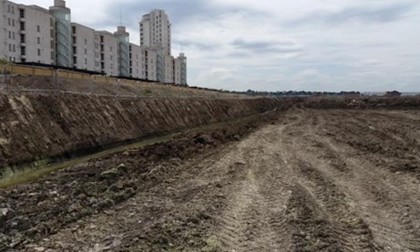 Read More
Read More
Guildford, Slyfield Regeneration
Excavation, waste segregation and treatment, water treatment, dynamic compaction, stabilisation, deep drainage, road construction kurbs, beany blocks, surfacing, street lighting, civil engineering.
The site was located on the periphery of an industrial estate and encompassed former sludge lagoons used by Guildford sewage treatment works. Gravel abstraction had been carried out on the site since the 1960s and was subsequently used as a...



 Read More
Read More
Southall, Western Access Road
Bioremediation, mechanical segregation, dynamic compaction, stabilisation.
Cognition Land and Water was contracted by FM Conway Limited to undertake remediation and earthworks for the redevelopment of the former Southall Gasworks. The site was surrounded by watercourses with a central tip area containing...



 Read More
Read More
Southall
Fabric extraction of DNAPL.
This site has been utilised for industrial activities for over 150 years, which have included brickworks, oil works, coal and oil gas manufacture, chemical works, benzole and tar manufacturing, docks and natural gas storage resulting in several...



 Read More
Read More
Steetley Chemicals, Worksop
Bioremediation, groundwater treatment, mechanical segregation of extraneous waste/asbestos, stabilisation/encapsulation, chemical oxidation.
The 85 hectare site was previously occupied by a refractory brick works, quarry, colliery, various small industries and a 25,000m3 waste tip. This was remediated so that the site would be suitable for future redevelopment. The principle...



 Read More
Read More
Tipner, Portsmouth
Bioremediation, segregation, groundwater treatment, soil washing, stabilisation, chemical oxidation, PRB.
The 1.7 hectare former PD Fuels Depot at Tipner formed part of the 44 hectare Tipner Regeneration Project that would transform the geographical area and provide a new gateway to Portsmouth. The site was located in a sensitive busy residential...



 Read More
Read More
Wandsworth, London
Demolition, waste segregation and treatment, bioremediation of grossly impacted contamination, NAPL recovery from groundwater, soil stabilisation, groundworks.
The site was occupied by a former gasworks from as early as 1868. The gasworks developed with additional infrastructure including tanks, cranes, retort house and chemical works added over the years to the 1950s until its eventual closure in the...



 Read More
Read More
Wisbech, Nene Waterfront
Bioremediation, stabilisation, groundwater treatment, chemical oxidation.
Cognition was contracted by Fenland District Council to remediate the Wisbech site in order to reduce environmental and human health risk as to enable redevelopment to facilitate the regeneration of this area. The remediation was partly funded...



 Read More
Read More
Kodak, Harrow
Demolition, site Investigation, bioremediation, materials management, groundwater treatment and soil stabilisation.
Cognition was appointed to carry out the remediation works at the former Kodak Factory in Harrow. The site is to be redeveloped by Barratt Homes with the construction of a number of residential blocks and associated landscaping and roads. ...



 Read More
Read More







